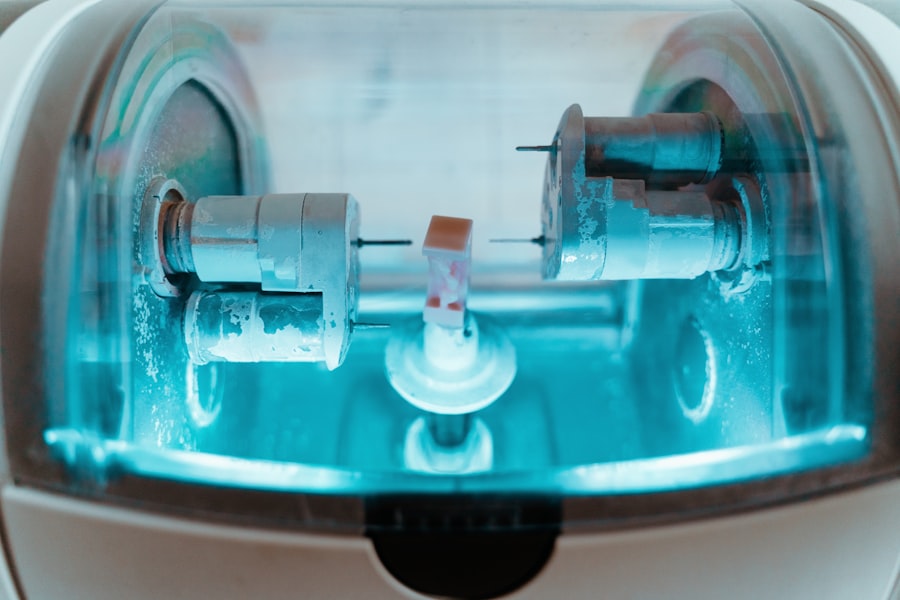Laser hair removal is a popular cosmetic procedure that utilizes concentrated beams of light to target and eliminate unwanted hair. The technology behind this method is based on the principle of selective photothermolysis, where the laser light is absorbed by the pigment in the hair follicles. This absorption generates heat, which damages the follicles and inhibits future hair growth.
As you consider this option, it’s essential to understand how the process works and what to expect during your treatment journey. During a typical session, a trained technician will use a handheld device to deliver laser energy to the treatment area. You may feel a slight tingling sensation or a mild snapping feeling as the laser pulses.
While many people experience minimal discomfort, the sensation can vary depending on your pain threshold and the area being treated. Understanding these aspects can help you prepare mentally and physically for your sessions.
Key Takeaways
- Laser hair removal uses concentrated light to target and destroy hair follicles, leading to permanent hair reduction.
- The number of sessions needed for laser hair removal can be affected by factors such as hair color, skin color, and hair thickness.
- 10 sessions of laser hair removal can result in significant hair reduction, with some individuals experiencing up to 90% reduction.
- Potential side effects of laser hair removal include redness, swelling, and skin irritation, while risks may include burns and changes in skin pigmentation.
- Maintenance sessions may be required after 10 treatments to ensure long-term hair reduction, typically on an annual basis.
Factors Affecting the Number of Sessions Needed
The number of laser hair removal sessions you will need can vary significantly based on several factors. One of the most critical elements is your hair type and color. Darker hair tends to respond better to laser treatments because the contrast between the hair and skin allows for more effective targeting of the follicles.
If you have lighter hair or very fine hair, you may require additional sessions to achieve optimal results. Your skin type also plays a role; individuals with lighter skin typically see better results than those with darker skin tones due to the way lasers interact with melanin. Another factor influencing the number of sessions is the area being treated.
Additionally, hormonal influences can affect hair growth patterns, particularly in women. Conditions such as polycystic ovary syndrome (PCOS) can lead to increased hair growth, necessitating more frequent sessions.
Understanding these variables can help you set realistic expectations for your treatment plan.
Effectiveness of 10 Sessions

Many clinics recommend a series of about 6 to 10 sessions for optimal results, depending on individual circumstances. After completing 10 sessions, most patients experience a significant reduction in hair growth, often reporting that treated areas are smoother and require less maintenance than before. The effectiveness of these sessions can be attributed to the laser’s ability to target hair in its active growth phase, known as the anagen phase.
Since not all hair follicles are in this phase at the same time, multiple sessions are necessary to catch each follicle when it is most susceptible to treatment. However, it’s important to note that while many individuals achieve satisfactory results after 10 sessions, some may still experience occasional regrowth. This is particularly true for those with hormonal imbalances or specific hair types that are more resistant to treatment.
Mayo Clinic In such cases, additional sessions may be recommended to address any remaining hair. Overall, after 10 sessions, you should expect a noticeable reduction in hair density and thickness, leading to smoother skin and less frequent shaving or waxing.
Potential Side Effects and Risks
| Side Effect | Risk Level |
|---|---|
| Nausea | Low |
| Headache | Medium |
| Dizziness | High |
As with any cosmetic procedure, laser hair removal comes with potential side effects and risks that you should be aware of before proceeding. Common side effects include temporary redness, swelling, and mild discomfort in the treated area. These symptoms typically subside within a few hours to a few days following treatment.
However, some individuals may experience more pronounced reactions, such as blistering or changes in skin pigmentation, particularly if they have darker skin tones or do not follow pre- and post-treatment care instructions. In rare cases, more severe complications can occur, such as scarring or infection. It’s crucial to choose a qualified practitioner who uses FDA-approved equipment and follows safety protocols to minimize these risks.
Additionally, discussing your medical history and any skin conditions with your provider can help tailor the treatment plan to your specific needs and reduce the likelihood of adverse effects.
Maintenance Sessions After 10 Treatments
After completing your initial series of 10 laser hair removal sessions, you may wonder about maintenance treatments. While many individuals enjoy long-lasting results, some may find that occasional touch-up sessions are necessary to maintain smooth skin. These maintenance sessions typically occur once every 6 to 12 months, depending on your individual hair growth patterns and hormonal influences.
The need for maintenance treatments can vary widely among individuals. Some may find that their hair growth has significantly diminished and requires little to no upkeep, while others may notice sporadic regrowth that necessitates additional sessions. Regular follow-ups with your practitioner can help assess your progress and determine an appropriate maintenance schedule tailored to your needs.
Alternative Options for Hair Removal
If laser hair removal doesn’t seem like the right fit for you, there are several alternative hair removal methods available. Traditional options include shaving, waxing, and depilatory creams, each with its own set of pros and cons. Shaving is quick and painless but often leads to stubble and requires frequent upkeep.
Waxing provides longer-lasting results but can be painful and may cause irritation for some individuals. For those seeking a more permanent solution without lasers, electrolysis is another option worth considering. This method involves using an electric current to destroy individual hair follicles and is effective for all hair types and colors.
However, electrolysis can be time-consuming since each follicle must be treated separately. Ultimately, your choice will depend on your personal preferences, pain tolerance, and desired results.
Cost Considerations for 10 Sessions
When considering laser hair removal, cost is an important factor that often influences decision-making. The price for a series of 10 sessions can vary widely based on several factors, including the geographic location of the clinic, the expertise of the practitioner, and the size of the treatment area. On average, you might expect to pay anywhere from $2,000 to $4,000 for a complete package of treatments.
It’s essential to keep in mind that while laser hair removal may seem like a significant investment upfront, it can save you money in the long run compared to ongoing expenses associated with shaving or waxing. Many clinics offer financing options or payment plans to make treatments more accessible. Additionally, some insurance plans may cover part of the cost if laser hair removal is deemed medically necessary due to conditions like hirsutism.
Consultation with a Professional
Before embarking on your laser hair removal journey, scheduling a consultation with a qualified professional is crucial. During this initial meeting, you will have the opportunity to discuss your goals, ask questions about the procedure, and learn about any potential risks or side effects specific to your situation. A skilled practitioner will assess your skin type and hair characteristics to develop a personalized treatment plan tailored to your needs.
This consultation is also an excellent time to discuss any concerns you may have regarding pain management or aftercare instructions. A reputable clinic will prioritize patient education and ensure that you feel comfortable and informed throughout the process. By taking this important step before beginning treatment, you can set yourself up for success and achieve the smooth skin you desire with confidence.
If you are wondering whether 10 sessions of laser hair removal are enough, you may want to check out this article on inlaserhairremoval.com. This article discusses the factors that can affect the number of sessions needed for effective hair removal, such as hair color and thickness, skin type, and the area being treated. It provides valuable information to help you determine if 10 sessions will be sufficient for your specific needs. For more information on laser hair removal services, you can also visit inlaserhairremoval.com or explore their home fashion section at inlaserhairremoval.com.
FAQs
What is laser hair removal?
Laser hair removal is a cosmetic procedure that uses a concentrated beam of light (laser) to remove unwanted hair. The light is absorbed by the pigment in the hair follicles, which damages the follicle and inhibits future hair growth.
How many sessions of laser hair removal are typically needed?
The number of sessions needed for laser hair removal varies depending on factors such as the individual’s skin and hair type, the area being treated, and the specific laser technology being used. On average, most people require 6-8 sessions spaced 4-6 weeks apart to achieve optimal results.
Is 10 sessions of laser hair removal enough?
In most cases, 10 sessions of laser hair removal should be sufficient to achieve significant hair reduction in the treated area. However, some individuals may require additional sessions for complete hair removal, while others may experience long-term hair reduction after 10 sessions.
What factors can affect the number of sessions needed for laser hair removal?
Factors that can affect the number of sessions needed for laser hair removal include the individual’s skin and hair type, the color and thickness of the hair, hormonal imbalances, and the specific area being treated. Additionally, adherence to the recommended treatment schedule and post-treatment care can impact the effectiveness of the procedure.
Are there any risks or side effects associated with laser hair removal?
While laser hair removal is generally considered safe, some potential risks and side effects may include temporary skin irritation, redness, swelling, and changes in skin pigmentation. It is important to consult with a qualified and experienced practitioner to minimize the risk of adverse effects and ensure the best possible outcome.






